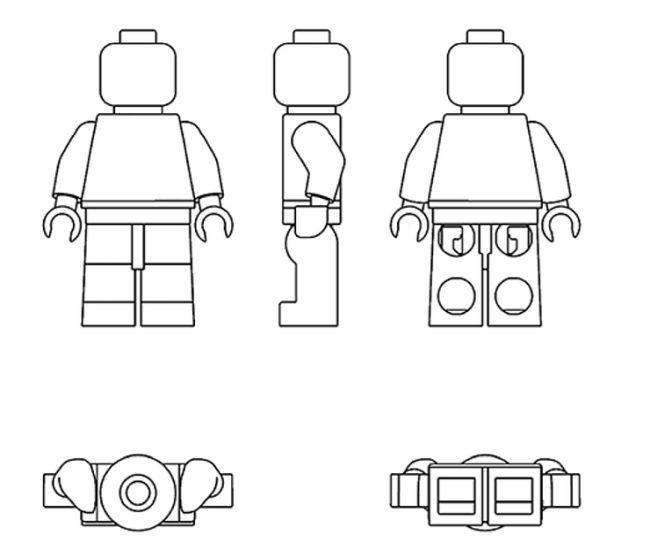A decision of the General Court of the European Union is of interest concerning the prohibition in the Canadian Trademarks Act relating to utilitarian function as a bar to registration. JUDGMENT OF THE GENERAL COURT (Sixth Chamber)6 December 2023 (*)
The Facts
Lego Juris A/S is the owner of two registrations for three dimensional marks. The drawing for the first mark is shown below

The second registration is the same but the dub on the top of the head is not present.
The validity of the registrations was attacked by a third party on the grounds that the registrations violated prohibitions that marks:
a) which consist exclusively of the shape which results from the nature of the goods themselves are not to be registered, and,
b) which consist exclusively of the shape of goods which is necessary to obtain a technical result are not to be registered.
The attack was limited to the goods consisting of "games and playthings."
To apply these provisions, it is necessary to identify the essential characteristics, that is, the most important elements of the mark in issue, on a case-by-case basis. The assessment is based either on the overall impression produced by the mark or on an examination of each of the components of that mark.
Ground a)
The Court said it was established that the prohibition cannot apply where the contested mark relates to a product shape in which another decorative or imaginative element, which is not inherent to the generic function of the goods, plays an important or essential role. The registration would be valid if at least one of its essential characteristics is not inherent to the generic function of a toy figure or the generic function of an interlocking building figure.
This was the case since the cylindrical or 'barrel' shape of the head of the figure, the short, rectangular shape of the neck, the flat and angular trapezoidal shape of the torso, and the specific shapes of arms with hands and legs with feet were not inherent either to the generic function of a toy figure or to the generic function of an interlocking building figure.
Ground b)
This prohibition precludes registration of any shape consisting exclusively, in its essential characteristics, of the shape of the goods which is technically causal of, and sufficient to obtain, the intended technical result, even if that result can be achieved by other shapes using the same or another technical solution. In examining the functionality of a mark consisting of the shape of goods, once the essential characteristics of the sign have been identified, it is only necessary to assess whether those characteristics perform the technical function of the goods concerned.
The prohibition cannot apply when the mark in issue relates to a product shape in which a non-functional element, such as a decorative or imaginative element, plays an important role. The Court said this was the case here since the same elements listed above under ground a) do not stem directly from the technical result of joining and combining an interlocking building figure in Lego's modular building system.
The Canadian Position
Under the Trademarks Act subsection 12(2) provides that a trademark is not registrable if, in relation to the goods or services in association with which it is used or proposed to be used, its features are dictated primarily by a utilitarian function. The reference to the features of the mark being "dictated primarily by a utilitarian function" is more nuanced than the European position.
The content of this article is intended to provide a general guide to the subject matter. Specialist advice should be sought about your specific circumstances.

